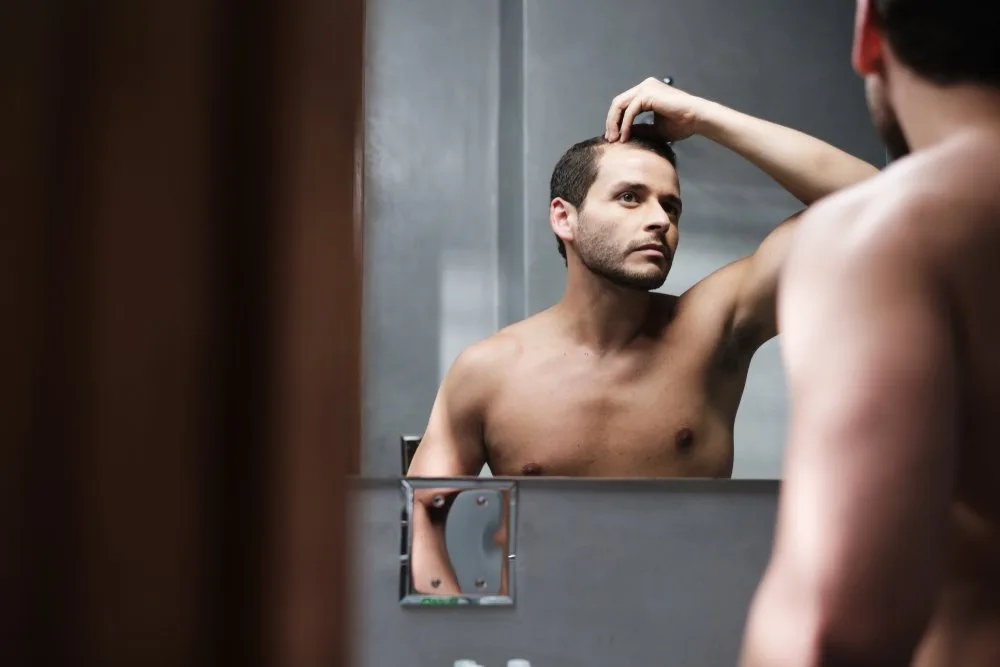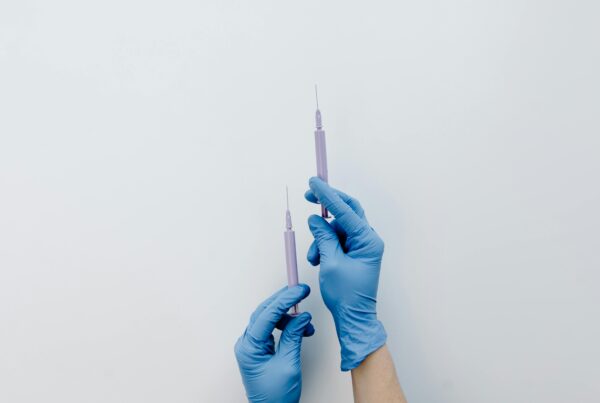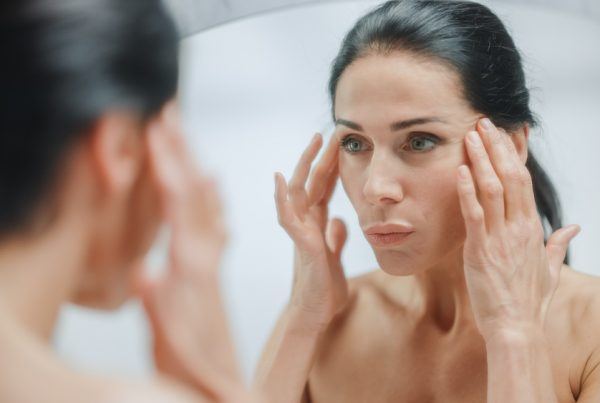Hair loss can happen for a variety of reasons. Genetics, illness, stress and hormonal changes in life can all impact the health of your hair. Young or old, male or female. If you start losing your hair unexpectedly, then you should consult a medical professional to understand what the underlying issue is.
Testing for hair loss will help you achieve a better outcome
Any form of hair loss is concerning. That’s why it is important to understand your hair loss, if it is more than what you would usually experience. A medical specialist will be able to help you understand why you are losing your hair and what treatments will work. The Mayo Clinic explains that before making a diagnosis, a doctor will likely give you a thorough physical exam. You will be asked about your diet, your hair care routine, and medical and family history. Additional tests may also be conducted to confirm a diagnosis. These include:
- Blood test. This might help uncover medical conditions that can cause hair loss.
- Pull test. Your doctor will gently pull out several dozen hairs to see how many come out. This will help determine the stage of the shedding process.
- Scalp biopsy. Samples from the skin were taken or a few hairs plucked from the scalp to examine the hair roots under a microscope. This can help determine whether an infection is causing hair loss.
- Light microscopy. A doctor uses a special instrument to examine hairs trimmed at their bases. Microscopy helps uncover possible disorders of the hair shaft
Depending on the outcome of these tests, several treatments may be recommended. This may include the following:
Five current hair loss treatment methods
1. Non-invasive surgical treatments
According to aging specialist Dr. Reza Mia, there are a variety of non-invasive treatments to opt for when suffering from hair loss.
Botox Hair Treatment
Sweating in the scalp increases the damage to the hair follicles, Botulinum Toxin reduces and prevents sweating in the areas. Botulinum toxin injections paired with injections of vitamins (cocktail mixture) are generally known to encourage hair growth. The treatment appears to improve the tissue environment surrounding the hair follicles by decreasing scalp tension and improving blood flow.
What about surgery for hair loss?
Substitutes for Botulinum Toxin Hair Replacement Treatments/Vitamin Hair Replacement Treatments could be either medical or surgical. There are surgical options for treating baldness such as Hair Transplantation. Surgical alternatives are considerably more expensive than Botulinum Toxin injections or prescription medications.
“For this reason, more and more patients are looking into Botulinum Toxin Hair Replacement Treatments/Vitamin Hair Replacement Treatments as a more feasible option for them.” explains Dr. Reza Mia.
He adds that “Botulinum Toxin has been used safely and successfully in ophthalmology for over 15 years and wrinkle therapy for almost 10 years. It has even been approved by the FDA for neurological disorders.
In the amounts used for Botulinum Toxin Hair Replacement Treatments/Vitamin Hair Replacement Treatments, the typical side effects are temporary and localized to the area of injection. However, medical treatment is not an exact science. The degree of improvement is variable. Typical side effects of scalp treatments were normally linked with Botulinum Toxin injections: temporary swelling, bruising, pain, etc.”
PRP Hair Restoration Treatment
PRP Platelet Rich Plasma is the use of a person’s own blood platelets to enhance hair growth.
Dr Mia uses PRP treatment for hair loss or to improve the recovery and results of hair transplant surgery.
“In the field of tissue regeneration, research is continuing to progress regarding the use of PRP’s ability to stimulate stem cells, improve wound healing, and rejuvenate skin and hair follicles.”
Are all PRP treatments the same?
He does not believe all PRP treatments are the same.
“In my practice I use the FDA-approved Celluvance PRP process to separate and activate Platelet Rich Plasma for use as a stand-alone therapy or in conjunction with hair transplantation.” – Dr Reza Mia
Microneedling
While it does sound painful, micro-needling is a non-painful and non-invasive cosmetic procedure. It allows your body to encourage collagen production.
Microneedling allows small and sterilized needles to prick the skin, and whenever this is done it creates new collagen in your scalp that can promote new hair growth. The micro-needling procedure is new when it comes to using it for hair growth. Many dermatologists recommend using another hair regrowth procedure to support this.
2. Hair Transplantation
If you’ve got hair on another part of your head, while also losing hair on another part of your head, then a medical professional may recommend Hair Transplantation surgery.
A hair transplant is a procedure in which a plastic or dermatological surgeon moves hair to a bald area of the head. The surgeon usually moves hair from the back or side of the head to the front or top of the head.
Hair transplants typically occur in a medical office under local anesthesia. Male androgenetic alopecia and female pattern hair loss are the most common reasons for hair loss consultations with dermatologists. However, not all hair disorders are suitable for transplantation.
3. Laser Hair Caps
Low-level laser therapy (LLLT) has become a popular alternative treatment. Laser hair growth therapy uses lasers to promote hair growth and reduce hair loss. There are several at-home laser products available to purchase online

According to Medical News Today, “laser hair growth is a therapy that uses low-level lasers to stimulate the scalp and the hair follicles to help reduce hair loss and promote hair growth.”
Research suggests that low-level laser treatment can:
- prolong the growth phase, anagen, of the hair cycle
- stimulate follicles in the resting phase, telogen, to transition to the growth phase
- slow down the transition to the regression phase, catagen
The Food and Drug Administration (FDA) has currently cleared these devices to treat male and female patterned hair loss or androgenic alopecia.
4. Supplementation, gels and medication
WebMD reports that your diet can have a significant impact on your hair.
” If you aren’t getting enough of certain key vitamins and minerals, you may be at risk for hair loss. Find out which foods you can get these important nutrients from, and make sure you talk to a medical professional before you take a supplement. When it comes to vitamins, more is not better, and sometimes too much can be harmful. “
The top supplements for hair support, according to WebMD, are:
Biotin
Biotin (vitamin B7) is important for cells inside your body. Low levels of it can cause hair loss, skin rashes, and brittle nails. Your levels may be low if you’re:
- Pregnant or breastfeeding
- Taking certain antibiotics or epilepsy drugs
Most people get enough biotin from their diet. You can find it in these foods:
- Egg yolks
- Whole grains
- Meat
Iron
Red blood cells need iron to carry oxygen. Low levels can cause iron deficiency anemia. Symptoms include fatigue, pale skin, and hair loss.
You’re at risk for low iron if:
- You’re a woman who gets heavy periods
- You have a chronic disease
- You’re a vegetarian or vegan
Some foods that are naturally rich in iron include:
- Red meat, grass-fed
- Leafy greens
- Legumes
Vitamin C
Vitamin C is essential for your gut to absorb iron. Some good sources of it are:
- Citrus fruits
- Leafy greens
- Bell peppers
 Vitamin D
Vitamin D
Vitamin D is important for bones. But did you know that low levels of it are linked to hair loss? Your skin makes vitamin D when you get sunlight, but many people can’t get enough from sun alone. Boost your levels by eating fatty fish or drinking fortified milk. You can also ask your doctor to recommend a supplement. Magnesium with Vitamin D will enhance bioavailability.
Zinc
Zinc can play a key role in making proteins in your hair and other cells. Your body can’t make it, so you need to get it from food or supplements. Signs of low zinc levels include hair loss, poor wound healing, and a weak sense of taste or smell.
You’re at risk for low zinc if you:
- Are pregnant or breastfeeding
- Have a bowel disease or severe diarrhea
- Have kidney disease
You should eat more of these food types:
- Shellfish
- Meat
- Beans
- Nuts and seeds
Hair shampoos, gels and medication
There are many shampoos and gels on the market promising to restore lost hair. Some of these include the ingredient minoxidil also known as Rogaine.
According to respected source, Healthline, “Rogaine may not work for everyone and works only for certain causes of baldness. It delivers the best results when you keep up with applications and use as directed.”
Minoxidil, the key active ingredient in Rogaine, has been available on the market for hair loss for more than three decades, since the introduction of 2% formula in 1986 This popular hair loss treatment is approved by the Food and Drug Administration (FDA) to treat male and female pattern baldness, and is available over the counter as a liquid or foam.
“While the exact way in which Rogaine may promote hair regrowth aren’t fully understood one 2022 review points to the anti-inflammatory, vasodilating, and anti-androgenic effects of minoxidil that could all contribute.” – Healthline
Importantly, Rogaine works only for certain types of baldness and only if you keep up with its application. Research has shown that results can peak after several months before declining. The product may be used off-label for other types of hair loss, but only if recommended by a doctor.
Medication
Hair loss medication is available, but only if prescribed by a medical practitioner. The medication most prescribed, according to the respected medical website Mayo Clinic, includes Finasteride (Propecia).
“This is a prescription drug for men. You take it daily as a pill. Many men taking finasteride experience a slowing of hair loss, and some may show new hair growth. It may take a few months to tell whether it’s working for you. You’ll need to keep taking it to retain any benefits. Finasteride may not work as well for men over 60.”
“Rare side effects of finasteride include diminished sex drive, sexual function and an increased risk of prostate cancer. Women who are or may be pregnant need to avoid touching crushed or broken tablets.” – reports the Mayo Clinic.
Other medications included, oral options including spironolactone (Carospir, Aldactone) and oral dutasteride (Avodart).
5. Wear a wig
While this isn’t a treatment, it is a solution if all else fails and you are finding it difficult to live without your hair. The psychological impact of hair loss is real and understandable. A well made wig using natural hair, especially one that matches your personal hair color as well as your own style, can easily boost your self-confidence. It will work immediately.
The bottom line
Today, newer hair loss techniques and products are ensuring more men and women can find a solution to hair loss. While there are instances when hair loss cannot be remedied, it’s still important to understand your hair loss and to support your health as you age.
References




 Vitamin D
Vitamin D![women [longevity live]](https://longevitylive.com/wp-content/uploads/2020/01/photo-of-women-walking-down-the-street-1116984-100x100.jpg)










